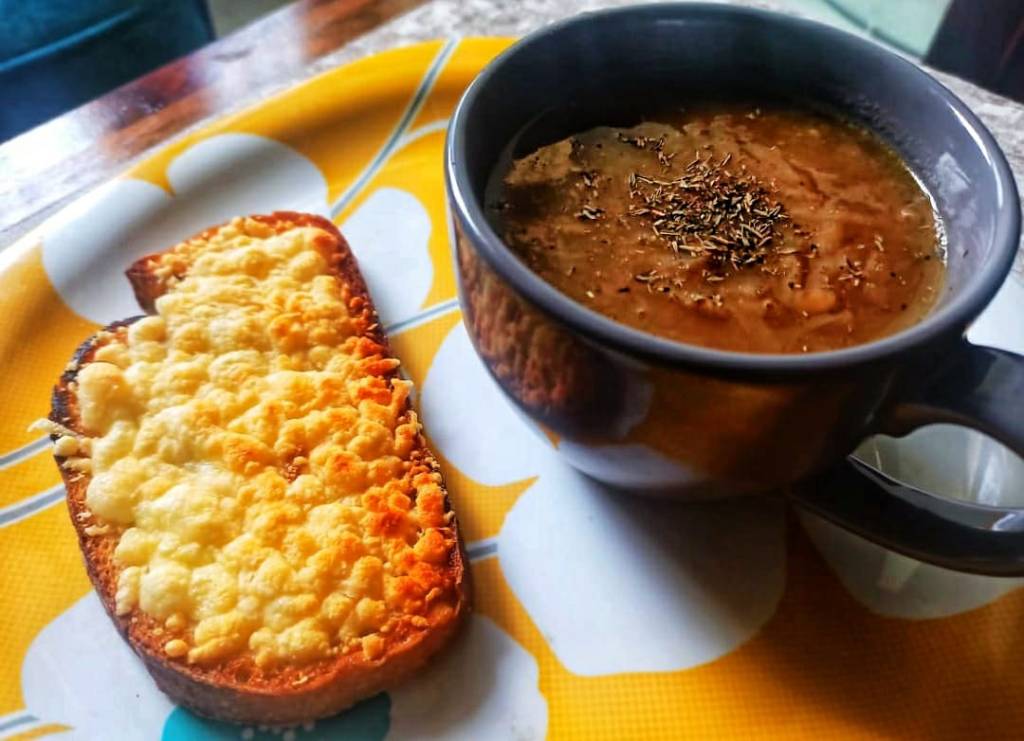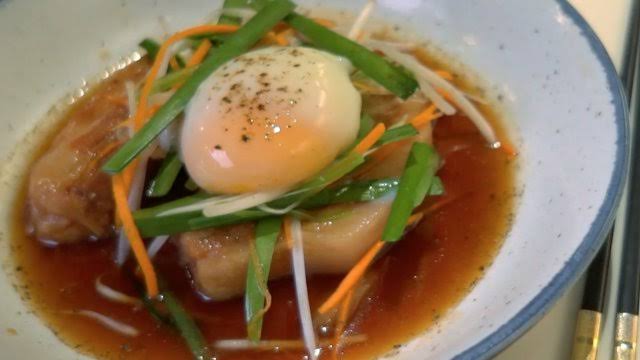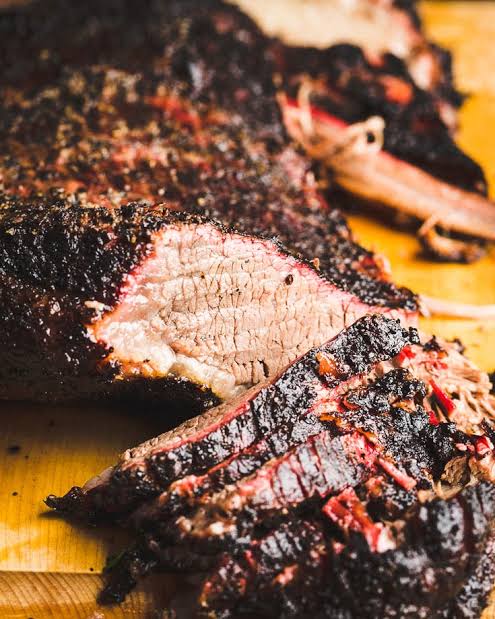The Slow Cook (Epilogue)
We’ve almost done with our sow cooking series, centered around the humble braise. We’ve slowly worked our steps through the braise and witnessed the transformation of simple ingredients into ambrosia. Before we conclude, it is worth exploring the slow-cooking technique in the context of some other dishes which do not fall squarely into the stew-braise category.
Let’s start, rather unconventionally, with dessert. A lot of Indian desserts involve slow cooking of ingredients over a low flame, which helps caramelize the sugars and produce a delicious end product. Reducing milk and sugar gives you delicious treats like rabdi and Ajmeri kalakand (also called milk cake). Take the gajar ka halwa a step further and you get a gorgeous gajar pak, with a deep colour and rich, caramelly notes.

Of course, carrots aren’t the only veggies you can subject to slow cooking. A dish which showcases the slow-cooked vegetable in all its glory is the classic French onion soup. It is mind-boggling just how long it takes for the onions to caramelize; a kilo would take an hour atleast. But it is necessary to give it that time so that the onions develop a deep colour and rich flavour, which makes a massive difference to the final dish. Of course, there is another side to the French onion soup, the stock.

A good stock can take hours, even days to make. Good ramen broths can take hours, even days to cook, like a magnificent Tonkotsu Ramen made using pork bones. Seafood stocks take significantly less time compared to meat stocks, but the secret to a good bouillabaisse, the classic Provençal fish stew is the depth of flavour in the broth, heady with exotic ingredients like saffron, orange and fennel.

Once you’ve got a good stock, you can reduce it further to make a demi-glace, a French concoction which simply involves cooking veal bones over a really, really long time. You could start with fresh bones, like Chef Bruno Albouze, or roasted bones like Chef John from Food Wishes dot com (if you didn’t sing that last phrase in your head, we can’t be friends). A good demi-glace can take an insanely long time, upto 2-3 days if you’re making a huge batch. A home batch should be done in 14-18 hours.

A demi-glace is a stock on steroids, ideal for sauces, although you can use a simple stock to make a sauce. Classic examples include Bordelaise sauce using red wine, and a Medeira sauce using a sweet fortified Medeira wine, both of which pair brilliantly with steak. With the demi-glace or stock prepared, putting the sauce together is a matter of minutes. A detailed article on saucemaking will have to wait for later.
/madeira-sauce-2500-56a210365f9b58b7d0c62bc1.jpg)
Confit is a technique of slow cooking fish or meat in oil at around 100-120 degrees Celsius. While salmon may take less than hour to confit, a piece of duck leg cooked in duck fat can take anything from three to four hours. Since the temperature is low, you get almost no browning. The texture of the final product, as described by a friend of mine, is more similar to poached meat than fried meat, except that a confit duck leg is a touch tougher compared to a poached chicken breast. It can be shredded and used in a salad, or added whole to a stew like the classic French cassoulet.

A great technique for low and slow cooking is sous vide, which we’ve already explored in our Molecular Gastronomy series. Sous vide gives us full control over the temperature, and allows us to cook meats at very low temperatures for very long times, much lower and slower than a stove top would allow, making it ideal for proteins with a low fat content like fish or chicken breast, which can dry out pretty easily.

Sous vide ensures that the meat doesn’t dry out, resulting in a much superior texture. A piece of meat with excellent intrinsic fat distribution (called marbling) like Wagyu or Kobe beef is the idea candidate for sous vide. Speaking of texture, recall the 63-degree egg we talked about last time, a dish that was all about the texture. Although not incredibly accessible in most domestic homes, sous vide is the new cool kid on the slow-cooking block.

On the polar opposite of the cutting-edge sous vide technique is the age-old tradition of the barbecue, a technique of cooking meat slowly over a flame that dates back to prehistory. Large, tough cuts of meat are ideal for barbecue, and nobody does it better than the Texans, whose smoked beef briskets are exceptionally juicy and bursting with flavour.

The recipe? Take a piece of meat, rub it with a spice rub or paste and cook it low and slow over a flame for hours, even overnight. Over time the fat renders, the meat softens and the flavours intensify. A tough piece of pork shoulder becomes so tender that the strands of meat can be pulled apart with a fork, and so the glorious pulled pork is born. All the crevices in between the teased-apart strands of meat are perfect for holding onto the sauce.

Taking heat away from the equation doesn’t halt cooking, it merely slows it down. Think of a salt-cured egg yolk, where it is the salt which is doing the cooking, which takes a much longer time and produces a drastically different end-result compared to what we would end up with conventional cooking. Curing is a technique of cooking with salt which yields some wonderful results.

Popular cured seafood products include the Gravlax (Nordic cured salmon), Bacalhau (Portuguese salt cod), Bottarga (Italian mullet roe) and our very own shutki machh (Bengali dried fish, usually loita) In the cured meats department we are spoiled for choice, from the Spanish Jamon Iberico and chorizo to the Italian prosciutto, pancetta and salami, to good old pepperoni and bacon. Curing is a very Western technique of preserving meat and fish, and once again it simply requires time to transform simple pieces of meat and fish into masterpieces.

While curing involves adding a chemical ingredient like salt (sometimes sugar or nitrates), fermentation takes us from the chemistry lab to the biology lab, involving microbes to do the cooking for us. Bacteria brings about chemical reactions, producing new and complex flavour molecules. The examples are endless: Miso and soy sauce from soybeans, sauerkraut and kimchi from cabbage, yoghurt and cheese from milk, idlis and panta bhaat from rice, and of course, a wide variety of alcohol. Curing and fermentation is are separate topics on their own, and we will get to them soon.

I believe that by now I have adequately emphasized the virtues of time in the kitchen. We have explored the stew in detail and ended with a quick glance at a lot of topics, springboards for future ideas. If this article fells like a list of incomprehensible terms, don’t worry, we’ll delve into the details soon. Time is money. It is the secret ingredient. Use it well, and you can work wonders in the kitchen.